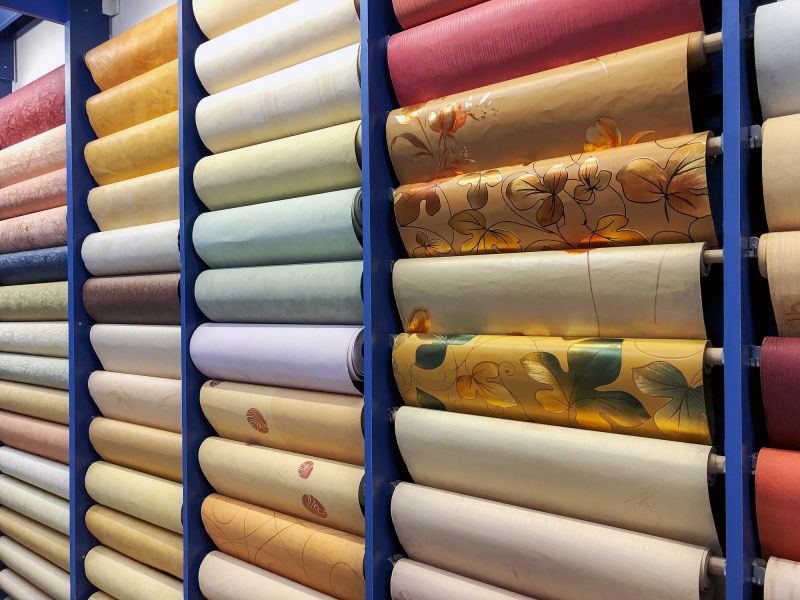Favorite Wallboard Installation Products for DIY Enthusiasts
Choose from trusted tools and materials that simplify wallboard projects for homeowners and hobbyists.
 Wallboard installations are a fundamental aspect of interior construction and renovation projects, offering versatile solutions for creating smooth, durable surfaces on interior walls and ceilings. The process involves selecting the right wallboard materials, appropriate fasteners, and tools to ensure a secure and professional finish. Proper installation not only enhances the aesthetic appeal of a space but also contributes to the acoustic and thermal insulation properties of a building. Whether for residential, commercial, or industrial settings, understanding the various products involved in wallboard installation can help achieve optimal results.
Wallboard installations are a fundamental aspect of interior construction and renovation projects, offering versatile solutions for creating smooth, durable surfaces on interior walls and ceilings. The process involves selecting the right wallboard materials, appropriate fasteners, and tools to ensure a secure and professional finish. Proper installation not only enhances the aesthetic appeal of a space but also contributes to the acoustic and thermal insulation properties of a building. Whether for residential, commercial, or industrial settings, understanding the various products involved in wallboard installation can help achieve optimal results.
Top Overall Option
Comprehensive Wallboard Installation Kit
A complete kit that includes a variety of fasteners, joint compounds, corner beads, and essential tools designed for versatile wallboard installation projects. This all-in-one package aims to streamline the process, making it easier for both professionals and DIY enthusiasts to achieve a clean, durable finish with compatible components.
Types of Products For Wallboard Installations
Drywall Screws
Specialized fasteners designed for securing drywall panels to framing members, available in various lengths and coatings for different environments.
Drywall Anchors
Anchors used to secure fixtures and accessories to drywall when direct fastening is not feasible or desired.
Joint Compound
A versatile material used to seal joints and cover fasteners, providing a smooth surface for finishing.
Corner Beads
Metal or plastic strips applied to corners to create sharp, durable edges and protect against damage.
Drywall Tape
Fiberglass or paper tape used to reinforce joints and prevent cracking.
Adhesive Wallboard Glue
Specialized adhesives for attaching drywall panels to ceilings or other surfaces without fasteners.
Sanding Supplies
Sandpaper and sanding blocks used to smooth joint compound and prepare surfaces for painting.
Drywall Lifts
Tools that assist in raising and positioning large drywall sheets for easier installation.
Taping Knives
Tools used to apply and smooth joint compound over seams and fasteners.
Drywall Saws
Specialized saws for cutting drywall panels to size and creating openings.
Fastener Guns
Power tools designed to quickly insert drywall screws or nails into panels.
Moisture-Resistant Boards
Wallboards formulated to resist moisture, suitable for high-humidity areas.
Fire-Rated Drywall
Specialized panels designed to provide fire resistance for safety compliance.
Acoustic Drywall
Panels designed to enhance soundproofing in interior spaces.
Metal Framing Components
Support structures such as studs and tracks used to frame wall surfaces.
Popular Choices
Widely used fasteners for securing drywall panels to framing members across various projects.
Commonly used for finishing seams and smoothing surfaces before painting or wallpapering.
Popular reinforcement material for sealing joints and preventing cracks.
Frequently chosen for creating durable and sharp corners on interior walls.
Often selected for mounting fixtures where framing is not accessible.
Popular for facilitating the installation of large drywall sheets, especially on ceilings.
Essential for achieving a smooth, finished surface prior to painting.
Commonly used in bathrooms and kitchens for their moisture resistance.
Selected for areas requiring fire safety measures in commercial buildings.
Popular in spaces where soundproofing is desired, such as studios or conference rooms.
Widely used for constructing the framework of interior walls, offering durability and flexibility.
The selection of products for wallboard installation depends on numerous factors, including the type of wallboard used, the surface to be covered, and the environment in which the installation occurs. For example, moisture-resistant panels are essential in bathrooms and kitchens, while fire-rated boards are critical for commercial or industrial applications. Additionally, the choice of fasteners, joint compounds, and tools can influence the ease of installation and the quality of the finished surface. Investing in high-quality, compatible products can facilitate a smoother process and a more durable outcome.
From traditional drywall screws to specialized adhesive options, the range of products available allows for tailored solutions suited to specific project needs. Accessories such as corner beads, taping tools, and sanding supplies further support a professional finish. When selecting products, it is important to consider compatibility, ease of use, and the specific requirements of the wallboard type. Proper planning and product selection can help prevent common issues like cracking, sagging, or uneven surfaces, ultimately contributing to a more efficient installation process and a polished final appearance.
Understanding the variety of products available for wallboard installation empowers builders, contractors, and DIY enthusiasts alike to make informed decisions. By choosing the right combination of materials and tools, one can achieve a secure, smooth, and long-lasting wall surface suited to the intended environment and aesthetic preferences. The right products not only streamline the installation process but also help ensure that the finished walls meet safety, durability, and visual standards.
Key Buying Considerations
- Compatibility with the type of wallboard being installed
- Environmental conditions such as humidity or fire safety requirements
- Ease of installation and whether specialized tools are needed
- Durability and resistance to moisture, fire, or impact
- Weight of panels and ease of handling during installation
- Type of fasteners suited for the framing material
- Availability of accessories such as corner beads and joint tapes
- Finish quality, including smoothness and crack resistance
- Compatibility of joint compounds with wallboard surfaces
- Cost-effectiveness and overall project budget
- Brand reputation and product reviews
- Compliance with building codes and safety standards
- Environmental factors like noise reduction or insulation needs
- Compatibility with finishing materials like paint or wallpaper
- Availability of technical support or guidance from suppliers
